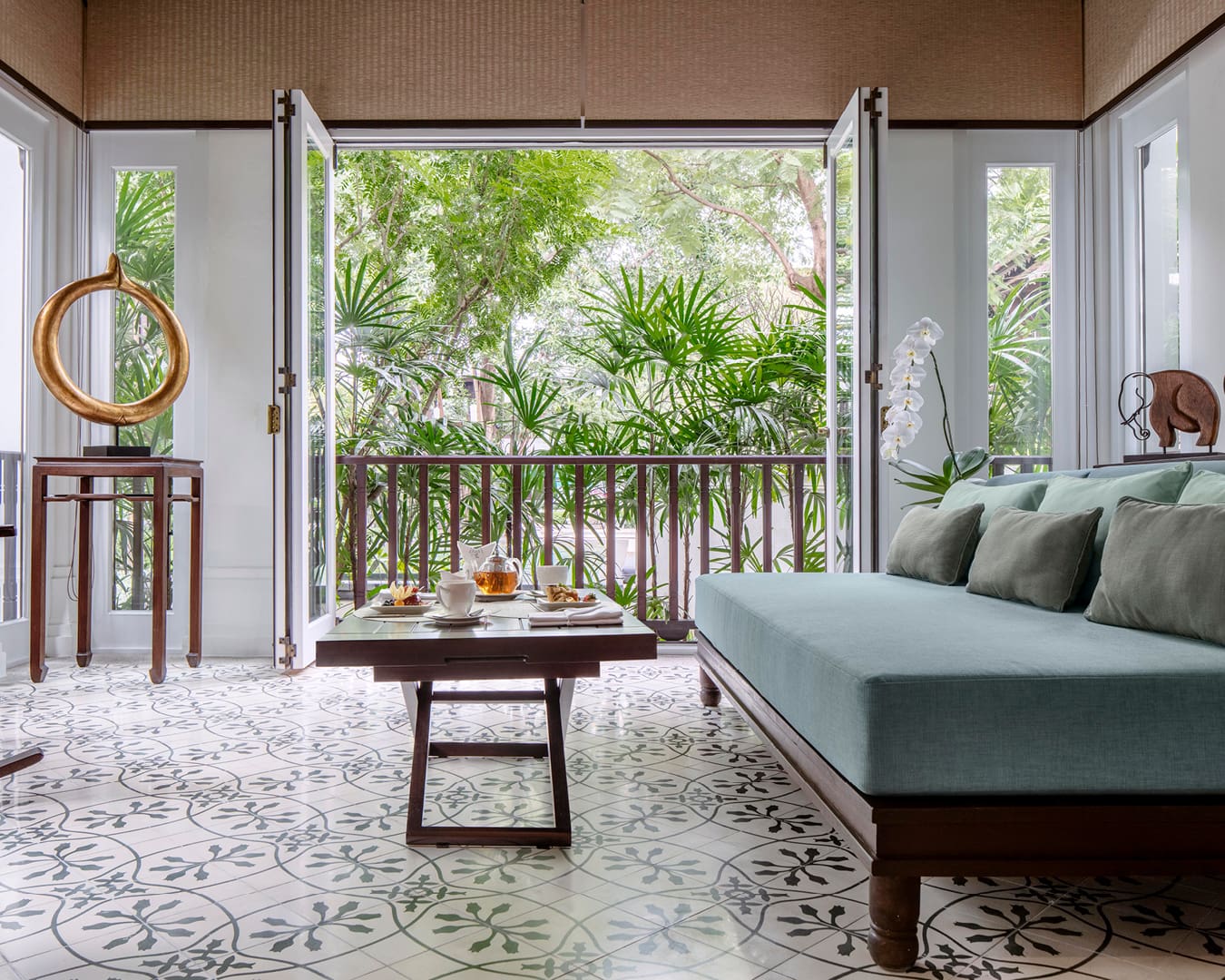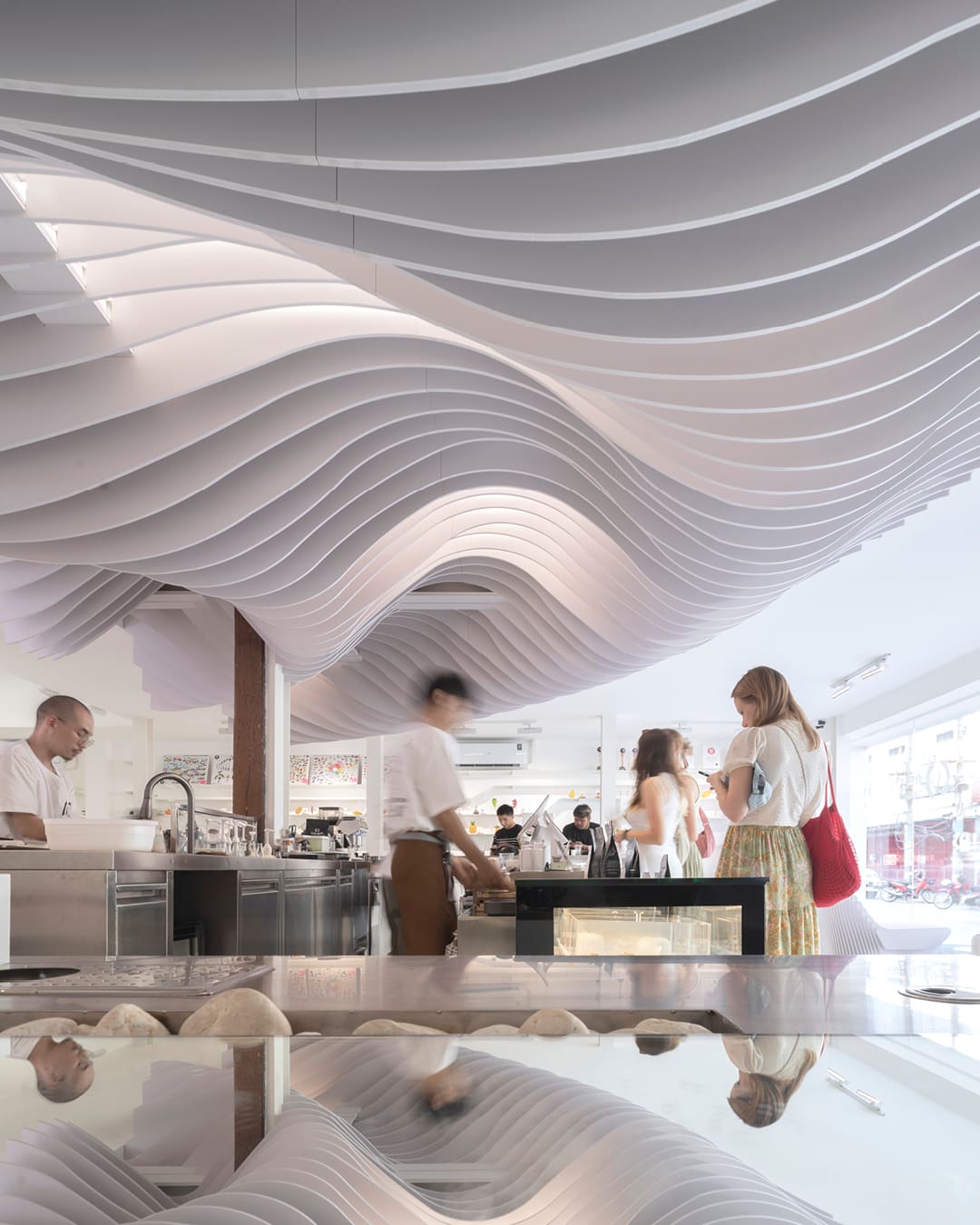
A weekend guide to Chiang Mai, Thailand’s culture-rich northern city
From street-food stalls and boutique stays to temples, markets and nature trails, get to grips with the historic Thai city of Chiang Mai with our comprehensive weekend guide
Thailand’s ‘rose of the north’ is a province brimming with creative energy, rice fields as far as the eye can see and more than 700 years of history shaped by the Mon, Khmer and Lanna kingdoms. Among the old city walls and hundreds of ancient temples of Chiang Mai city, you’ll also find a new breed of coffee shops, bars, boutique hotels, galleries and lifestyle precincts.
A short flight, or ten-hour sleeper train, north of Bangkok, Chiang Mai is a gastronomic hub, loaded with exhilarating fresh markets, late-night street food stalls and contemporary restaurants using seasonal ingredients grown in fertile soils. Bold and often pungent northern specialties not to be missed include khao soi (curry noodle soup), sai oua (coiled spicy pork sausage) and nam phrik (a fiery chilli dip).
The city’s coffee scene is thriving with new cafes proudly serving local beans sourced from small sustainable farms, while the emergence of high-quality cocktail bars has catapulted Chiang Mai into a world-class drinking destination.


Chiang Mai province is blessed with majestic countryside. Misty, jungle-clad mountains, elephant sanctuaries, waterfalls and national parks make it a playground for nature lovers, where you can spend a night in a hill tribe community, go bamboo rafting on the river or take to its famed curvy roads on a motorbike.
The best time to visit is between November and February, when you can expect clear skies, cooler temperatures and minimal rainfall. This is peak tourist season, which also means local attractions and hotels will be crowded. In November, both Loy Krathong and the Yipeng festivals see thousands of lanterns released into the night sky to carry away unfortunate things and make way for a bright future. Avoid February to April when ‘burning season’ sees air quality reduced as farmers set light to fields to prepare for the next crop cycle.
Read on for our guide to the best places to stay, eat, see and visit while in Chiang Mai.


The best hotels in Chiang Mai
From budget guesthouses to chic boutiques and safari-style glamping, the choice of stays in Chiang Mai is vast. Thee Vijit Lanna is a stylish, compact hotel conveniently located opposite the eastern wall of the old city. It has a shaded pool, gym, à la carte breakfast and houses one of Chiang Mai’s finest cocktail bars. For a more traditional experience, the family-run BaanBooLoo Village offers Thai-style wooden treehouses in a peaceful residential area of the old city, with teak furniture and woven Thai textiles throughout.
.
U Nimman is a modern luxury hotel with an unbeatable position for exploring Chiang Mai’s hippest neighbourhood – Nimmanhaemin (Nimman for short). A rooftop pool with mountain views and an expansive buffet breakfast seals the deal. The hotel backs onto the architecturally striking One Nimman precinct – a mix of traditional Lanna-inspired design and European village aesthetics that’s home to shops, restaurants, galleries and the nightly White Market, featuring local artisans and designers.
If you’re willing to splurge, 137 Pillars House is a stunning boutique hotel with an air of sophistication. Generously sized suites (with a patio or veranda), gourmet dining, a swimming pool, library and spa treatments will ensure you won’t want to leave.
The more adventurous can head south for two or three days of glamping at The Bush Camp Chiang Mai on the Ping River. The luxury safari-style tents, all built by skilled local workers, have a hot and cold shower, electricity, wifi and magnificent balcony views. Enjoy ethical elephant activities, birdwatching and mountain scenery, plus the onsite restaurant and infinity pool.

The best restaurants in Chiang Mai
After years of running workshops, cooking classes and a cafe on their organic rice farm in Chiang Mai, the founders of Ginger Farm tried their hand at the restaurant game. Ginger Farm Kitchen, which now has branches in Bangkok, is a bright and polished affair in One Nimman precinct that gloriously showcases northern and Thai cuisine using fresh and vibrant farm produce. A list of nourishing smoothies, homemade sodas, kombucha and mocktails, which feature local ingredients like rosella, guava, Thai basil and avocado, deserves exploration.
Set in a charming garden around the corner, Kao Soy Nimman is one of the hottest seats in town. It draws crowds for its traditional and non-traditional versions of khao soi, which may scare off purists. A selection of northern-style soups and nam phriks will test the untrained palate.
Chiang Mai’s most opulent curry noodle soup belongs to Kiti Panit, where the generously portioned chicken falls off the bone. The beautifully presented Lanna cuisine is served in a 130-year-old mansion east of the Tha Phae Gate – Chiang Mai’s first general store in its former life. After lying uninhabited for 50 years, it was revitalised by the family’s next generation with the help of local craftspeople.

Over the road in the repurposed Thapae East precinct, Maadae Slow Fish Kitchen is a new player on the city’s dining scene, sourcing fresh seafood from ‘slow boat’ fishers in southern Thailand. The daily changing menu uses seasonal ingredients from small-scale organic growers, which is complemented by natural wines.
For the best local street food, SP Chicken is a 50-year-old institution serving some of the juiciest, garlic-marinated, grilled chicken you’ll ever eat. The popular old city restaurant is on the tourist radar, so get there before chickens sell out and also be sure to order the spicy pork larb, which is sour and herbaceous. Taste the city’s most famous khao kha moo (stewed pork leg) at ‘Cowboy Hat Lady’, a lively spot found among other food stalls opposite the city’s North Gate every night.
Yok Fa Pochana is a no-nonsense noodle shop in the old city churning out unbeatable pad see ew (fried noodles in soy sauce), while the unassuming RodYiam Beef Noodle in Nimman serves up magnificent beef brisket soup.

The best coffee shops in Chiang Mai
There has never been a better time to drink coffee in Chiang Mai, thanks to a recent shift towards lighter roasting styles, exciting new drink combinations and a dedication to sourcing beans from sustainable farms in northern Thailand.
Akha Ama Phrasingh is the old city’s coffee hub and the place to taste a wide range of beans from northern provinces by a team committed to empowering local growing communities. At the other end of the spectrum is Graph Cafe, a super-cute and communal ten-seater tucked away near the old city’s eastern wall, which roasts its own beans and serve adventurous drinks like a ‘jungle espresso tonic’ – espresso on ice blended with a citrus, ginger, rose petal and cinnamon infused tonic.
For a grungy neighbourhood feel with a welcoming energy, head to Brewginning on Chang Moi Road – fast becoming a magnet for all things cool – while the nearby Ministry of Roasters offers a technical yet relaxed atmosphere with an interactive wall of coffee scents. Roast8ry Lab continues to be the coolest spot to get caffeinated in a backstreet of ever-hip Nimman, where the focus is on single origin beans from around the world. The outstanding coffee is backed up by a string of world barista, roasting and latte art awards.


The best places to drink in Chiang Mai
Chiang Mai’s first speakeasy and one of the best bars in the old city, White Rabbit leads you to its dark interior through an abandoned building with visual clues. Hidden down a quiet lane near the busy Tha Phae Gate is Midlife Crisis, featuring personalised service and a spirit-heavy cocktail list of Thai pun hashtags, while Bitter Truth is a favourite among local bartenders, located at the southern end of the old city.
Music lovers should visit The North Gate Jazz Co-Op, which pumps every night of the week. Crowds spill onto the street with a drink in hand, trying to catch a glimpse of the lively bands inside. The venue has also opened NG Collective next door, a shinier bar where you can sample locally made spirits and pick up your favourite jazz on vinyl.
Those looking for a fun and flamboyant time can catch a drag performance at 6ixcret Show, in an area known for go-go bars and the Chiang Mai Night Bazaar in the city’s east. The intimate venue is known for high-energy acts with dancers, surprise entrances and audience participation.

The best places to visit in Chiang Mai
If you only visit one temple in Chiang Mai, make it Wat Phra That Doi Suthep. Located atop Doi Suthep mountain, accessed via an impressive stairway flanked by two Naga (mythical water serpents), it offers sweeping views over the city. Sunrise and sunset are particularly spiritual.
In the old city, Wat Chedi Luang is one of Chiang Mai’s most important places of worship, and whose enormous chedi (Buddhist stupa) has dominated Chiang Mai’s skyline since its construction began in 1391. A short walk away is Wat Phra Singh, one of the finest examples of classic Lanna architecture and home to the revered Lion Buddha statue. A path within the tranquil grounds meanders through trees adorned with Buddhist wisdoms.

The Sunday Night Walking Street Market is one of the biggest attractions in Chiang Mai, showcasing the local crafts and traditions of the northern Thai people. It’s a festive atmosphere filled with buskers, puppeteers, live artists, street food and bars. Elsewhere, early birds can head to Pratu Market at the Chiang Mai Gate to watch locals buy and sell their produce. It’s open from pre-dawn until midday and a great place to find coiled pork sausage, mango sticky rice and fresh curry paste. In ‘little Chinatown’, the city’s oldest trading quarter, Warorot Market is a must-visit for an astonishing range of traditional dishes, local ingredients and household items.
For a change of pace just north of the old city, head to the weekend Jing Jai Farmers’ Market for organic produce, artisan food stalls, locally made clothing and handicrafts. There’s plenty of shade, a playground for kids and a free contemporary art gallery.
Enjoy a moment of self-care while supporting a good cause at the Women’s Massage Centre by Ex-Prisoners, a privately funded initiative that provides a pathway for Thai massage vocational graduates from the women’s prison in Chiang Mai. They have five branches in the city, which is testament to their popularity and the opportunities they provide.

The best natural spots in Chiang Mai
Chiang Mai province has some of the most beautiful waterfalls and national parks in Thailand, ideal for day-tripping and finding serene places to swim, picnic and reset. Mae Sa Waterfall lies 25 kilometres north of the city in Doi Suthep-Pui National Park and cascades over ten tiers in a cooling forest, with dipping opportunities in clear small pools along the way up the easy mountain track. It’s very popular with local families and tourists on weekends.
Discover the beautiful flora, fauna and slower life of the northern hill tribes on a trek through the mountainous and remote jungles of Chiang Mai. Chiang Mai Trekking with Piroon has been offering tours led by local guides for more than 30 years.

Into the Wild Elephant Camp is an inspiring enterprise located in southern Chiang Mai that offers retired and rescued elephants a safe and sustainable home. They provide half-and full-day programmes where you can observe, feed and bathe elephants in their natural environment. Elefin Farm and Cafe is a more accessible and affordable way to meet and hand-feed elephants by purchasing baskets of food provided by the venue.
For more insider insight on Thailand’s most compelling destinations, visit our comprehensive Bangkok city guide.










